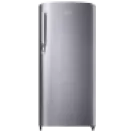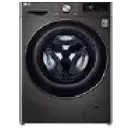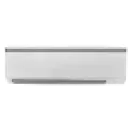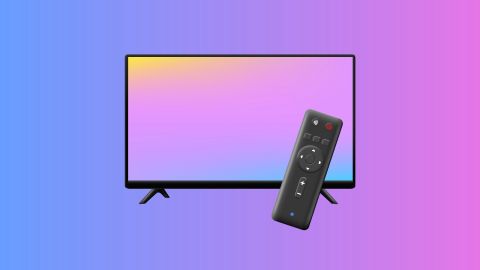Stay comfortable in every season with the right cooling and heating solutions for your home. Browse Bajaj Mall for a wide range of top-brand appliances including air conditioners, compare features, and find the perfect fit for your needs. Explore a wide range of home appliances on Bajaj Mall. Alternatively, visit any of Bajaj Finserv’s 1.5 lakh partner stores in 4,000 cities to select a model that fits your cleaning preferences. Enjoy Easy EMI and zero down payment offers exclusively with Bajaj Finserv.
3 min
20-Feb-2025
Delhi’s temperature varies drastically throughout the year, with sizzling summers, monsoon showers, and chilly winters shaping its climate. In summer, temperatures can soar beyond 45°C, while winter nights drop as low as 2°C. The monsoon brings humidity and occasional heavy rainfall, making each season unique and unpredictable.
Stay comfortable in every season with the right cooling and heating solutions for your home. Browse Bajaj Mall for a wide range of top-brand appliances including air conditioners, compare features, and find the perfect fit for your needs. Explore a wide range of home appliances on Bajaj Mall. Alternatively, visit any of Bajaj Finserv’s 1.5 lakh partner stores in 4,000 cities to select a model that fits your cleaning preferences. Enjoy Easy EMI and zero down payment offers exclusively with Bajaj Finserv.
Stay comfortable in every season with the right cooling and heating solutions for your home. Browse Bajaj Mall for a wide range of top-brand appliances including air conditioners, compare features, and find the perfect fit for your needs. Explore a wide range of home appliances on Bajaj Mall. Alternatively, visit any of Bajaj Finserv’s 1.5 lakh partner stores in 4,000 cities to select a model that fits your cleaning preferences. Enjoy Easy EMI and zero down payment offers exclusively with Bajaj Finserv.
Extreme temperature swings in Delhi: What you need to know
Delhi experiences drastic temperature fluctuations throughout the year, ranging from scorching summers to freezing winters. During peak summer, the temperature can exceed 45°C, making air conditioning essential for comfort. Winters, on the other hand, bring cold waves with temperatures dropping below 5°C, requiring adequate heating solutions.
Visit our partner stores to explore a range of home appliances designed for every season. Choose your preferred model, and convert its cost into Easy EMIs for an affordable purchase. With a flexible repayment tenure of up to 60 months. This financing solution from Bajaj Finserv is available on 1 million products.
- Summer heatwaves: High temperatures and dry winds make cooling solutions a necessity.
- Chilly winters: Sudden drops in temperature demand warm clothing and heating appliances.
- Monsoon impact: Humidity levels rise significantly, adding to the discomfort.
- Air quality concerns: Temperature fluctuations often worsen pollution levels in the city.
Delhi's climate: A guide to the city's temperature trends
Delhi’s climate is highly variable, experiencing extreme summers, cold winters, and humid monsoons. The city falls under a humid subtropical climate, with temperatures swinging between 45°C in peak summer and dropping to 2°C in winter. Seasonal shifts make it essential to adapt your home environment for comfort.- Scorching summers: Intense heat waves and dry winds make cooling solutions a necessity.
- Chilly winters: Temperature drops demand layered clothing and heating appliances for warmth.
- Monsoon humidity: Increased moisture levels add to the discomfort, requiring dehumidification solutions.
- Air quality fluctuations: Seasonal weather changes often worsen pollution, affecting respiratory health.
- Energy-efficient cooling: Investing in aninverter AC helps maintain consistent cooling while reducing energy costs.
How to stay cool during Delhi's scorching summers: Temperature tips
Delhi’s summers can be extremely harsh, with temperatures often exceeding 45°C. The intense heat, combined with dry winds, makes it essential to take precautionary measures to stay cool and hydrated. Here are some practical ways to beat the heat:- Stay hydrated: Drink plenty of water and include cooling foods like fruits and yogurt in your diet.
- Block out heat: Use curtains, blinds, or reflective films to prevent excess sunlight from heating up indoor spaces.
- Limit outdoor activities: Avoid stepping out during peak afternoon hours when the heat is at its worst.
- Use energy-efficient cooling: Consider installing a portable AC for quick and flexible cooling without the need for permanent installation.
- Wear light clothing: Opt for loose, breathable fabrics like cotton to stay comfortable.
Visit our partner stores to explore a range of home appliances designed for every season. Choose your preferred model, and convert its cost into Easy EMIs for an affordable purchase. With a flexible repayment tenure of up to 60 months. This financing solution from Bajaj Finserv is available on 1 million products.
Explore home appliances on Easy EMI with Bajaj Finserv
Explore a wide selection of home appliances on Bajaj Mall which are designed to provide the perfect indoor climate, no matter the season. Choose from top brands, compare features, and find a model that suits your needs. Visit the nearest Bajaj Finserv partner store to make your purchase effortlessly. With Bajaj Finserv’s financing options, you can enjoy a seamless shopping experience. Pick a repayment plan that fits your budget and benefit from Easy EMI options.Benefits of shopping with Bajaj Finserv’s financing options
- Affordable pricing: Find the best deals on home appliances at Bajaj Finserv partner stores, ensuring high quality at a competitive price.
- Easy EMI: Buying a home appliance is now stress-free with Bajaj Finserv’s Easy EMI, making payments more manageable.
- Zero down payment: Get your preferred home appliance today with zero down payment and enjoy instant cooling or heating without upfront costs.
- Wide range and accessibility: Browse a diverse collection of home appliances at Bajaj Finserv’s partner locations and avail exclusive savings.
- Free home delivery available: Enjoy complimentary home delivery on select home appliances for a smooth and hassle-free shopping experience.
Air conditioners
ACs by capacity
Budget
Star rating
AC comparison
AC buying guide
Bajaj Finserv App for all your financial needs and goals
Trusted by 50 million+ customers in India, Bajaj Finserv App is a one-stop solution for all your financial needs and goals.
You can use the Bajaj Finserv App to:
Apply for loans online, such as Instant Personal Loan, Home Loan, Business Loan, Gold Loan, and more.
You can use the Bajaj Finserv App to:
Apply for loans online, such as Instant Personal Loan, Home Loan, Business Loan, Gold Loan, and more.
- Explore and apply for co-branded credit cards online.
- Invest in fixed deposits and mutual funds on the app.
- Choose from multiple insurance for your health, motor and even pocket insurance, from various insurance providers.
- Pay and manage your bills and recharges using the BBPS platform. Use Bajaj Pay and Bajaj Wallet for quick and simple money transfers and transactions.
- Apply for Insta EMI Card and get a pre-approved limit on the app. Explore over 1 million products on the app that can be purchased from a partner store on Easy EMIs.
- Shop from over 100+ brand partners that offer a diverse range of products and services.
- Use specialised tools like EMI calculators, SIP Calculators
- Check your credit score, download loan statements, and even get quick customer support—all on the app.
Frequently asked questions
Is Delhi very cold now?
Delhi experiences significant seasonal temperature variations, with winter months bringing cold waves and foggy mornings. Between December and February, temperatures can drop to as low as 2-5°C, making it necessary to use warm clothing and heating solutions. However, if it is currently outside the winter season, Delhi may not be as cold. Weather conditions change frequently, so checking real-time updates is the best way to determine the current temperature. Wind speeds, humidity levels, and pollution also contribute to how cold the city feels, making it essential to stay updated with daily weather reports.
When to expect rain in Delhi?
Delhi primarily receives rainfall during the monsoon season, from June to September, when humid winds from the Bay of Bengal bring heavy showers. However, occasional winter rains also occur due to Western Disturbances between December and February. Pre-monsoon showers in April and May can bring some relief from extreme heat, but rainfall during this period is usually scattered and short-lived. Unpredictable climate patterns, rising temperatures, and global weather changes have also led to unseasonal rain showers in recent years. Checking the latest weather forecasts is the best way to stay informed about rainfall predictions.
What will be the temperature of Delhi in 2050?
Climate experts predict that by 2050, Delhi’s temperature could rise by 2-3°C on average, making summers hotter and longer. Studies indicate that heatwaves may become more intense, with peak summer temperatures potentially crossing 50°C. Rising global temperatures, rapid urbanisation, and increased carbon emissions contribute to this warming trend. Winters may also become shorter and milder, affecting seasonal balance. Extreme weather events like sudden rainfall, storms, and air pollution issues may worsen due to climate change. To combat these changes, sustainable city planning, energy-efficient cooling solutions, and environmental policies will be crucial in ensuring climate resilience.
Where is the 50-degree temperature in India?
Several regions in Northwest India have recorded temperatures above 50°C during peak summer months. Phalodi, Rajasthan, holds the record for India’s highest temperature, reaching 51°C in May 2016. Other cities like Churu, Rajasthan, and parts of Uttar Pradesh and Gujarat also experience extreme heatwaves, with temperatures frequently touching 48-50°C in May and June. These high temperatures result from intense solar radiation, dry winds, and low humidity levels, making these regions among the hottest places in India. Heatwaves in Delhi, Haryana, and Punjab have also intensified in recent years due to rising global temperatures and urban heat island effects.
Why is Delhi getting hotter?
Delhi is becoming hotter due to rapid urbanisation, deforestation, and rising pollution levels. The urban heat island effect, caused by concrete structures, vehicle emissions, and reduced green cover, traps heat and raises temperatures. Additionally, climate change is intensifying heatwaves and unseasonal weather fluctuations. Increasing air pollution and smog also contribute to retaining heat in the city. Delhi’s water bodies are shrinking, and excessive groundwater extraction has led to rising land temperatures. To counter these effects, steps like expanding green spaces, improving public transport, and promoting energy-efficient cooling solutions are essential to making the city more climate-resilient.
Show More
Show Less











